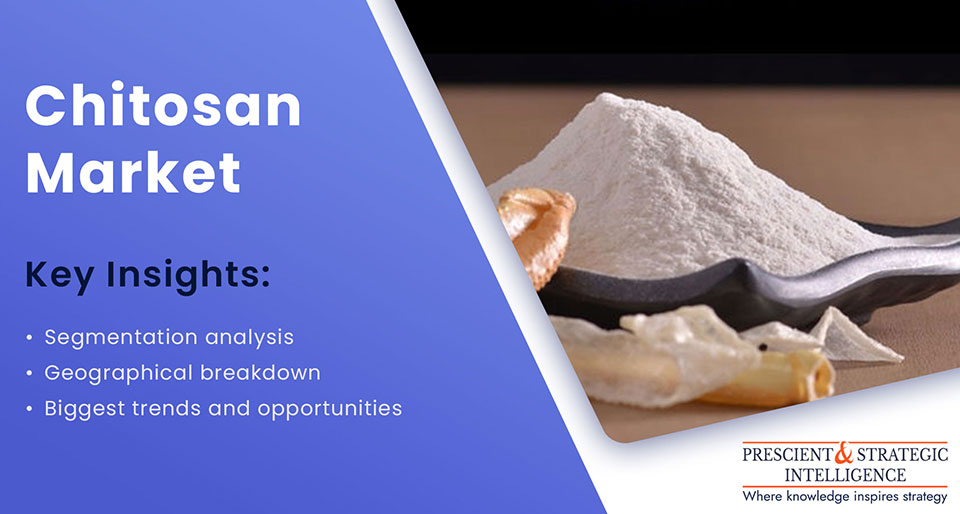Factors such as the rising consumption of chitosan in the biomedical, wastewater treatment, agrochemical, food and beverage, cosmetic, and bioplastic industries and increasing research and development (R&D) activities being carried out in this compound are expected to facilitate the chitosan market growth during the forecast years (2021–2030). According to P&S Intelligence, the market was valued at $1.8 billion in 2020. Chitosan refers to biodegradable and non-toxic sugar, which is derived from the hard outer skeleton of crab, shrimp, and lobster.

In recent years, the increasing shift of the food preservative industry from formalin to chitosan has become a major trend in the chitosan market. Food preservatives are added to perishable food products to extend their shelf life. Consumption of formalin-based preservatives leads to the occurrence of cancer, lung diseases, and skin ailments. Owing to the harmful effects of formalin, chitosan is being increasingly used as a food preservative by food and beverage companies. Moreover, the higher biocompatibility of chitosan than formalin will also fuel its use as a food preservative in the coming years.
Currently, the prominent players in the chitosan market, such as Primex ehf, KitoZyme LLC, FMC Corporation, Axio Biosolutions Private Limited, Bio21 Co., Heppe Medical Chitosan GmbH, Meron Group, AgraTech International Inc., and Marshall Marine Products Private Limited, are focusing on product launches to consolidate their position. For instance, in April 2020, Axio Biosolutions Private Limited introduced a next-generation chitosan-based wound dressing named MaxioCel. This dressing offers high comfort and rapid healing to patients suffering from skin abrasions, pressure ulcers, venous leg ulcers, diabetic foot ulcers, post-surgical wounds, cavity wounds, and donor site wounds.
Geographically, Asia-Pacific (APAC) held the largest share in the chitosan market during the historical period, and it is also expected to demonstrate the fastest growth throughout the forecast period. This can be attributed to the chelating feature of chitosan, which makes it ideal for the treatment of heavy-metal-laden industrial effluents. Moreover, the increasing R&D activities being conducted in chitosan and the surging incidence of chronic diseases will also augment the market growth in the region in the forthcoming years.
Thus, the rising consumption of chitosan in the biomedical and food and beverage industries will support the market growth in the upcoming years.